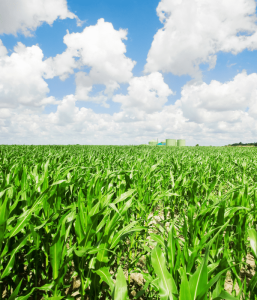Is biogas energy-rich?
Biogas is a renewable fuel created when organic matter is broken down by microorganisms without the presence of oxygen – the process otherwise known as anaerobic digestion.
Predominantly made up of methane and carbon dioxide, once produced, biogas can be ‘scrubbed’ and released into the national gas grid as energy to heat and power homes & businesses.
But is biogas energy-rich? And, if so, how much energy is there in biogas?
Is biogas energy-rich?
As well as being renewable, biogas is, indeed, considered energy-rich; each cubic metre of biogas containing the equivalent of 6 kWh of calorific energy.
However, this changes when biogas is converted to electricity, where approximately 2 kWh of usable electricity is produced and the remaining energy is turned into heat which, of course, can also be harnessed and used in heating applications.
To put this into context, the 2 kWh of electricity generated by a single cubic meter of biogas can light a 100W bulb for 20 hours, or run a 2000W hair dryer for one whole hour.
The many uses of biogas
With this, there are many uses and advantages of biogas – most which we’ve detailed in our recent article ‘5 uses and advantages of biogas’ – and, within the context of domestic use, span cooking, drying, heating and cooling.
Interestingly, biogas can also replace fossil fuels in a variety of industrial applications including heating large buildings & factories, within drying processes, smelting, power production, incineration and waste management.
Carbon Capture, Usage & Storage
What’s more, the carbon dioxide – AKA green CO2 – produced during the anaerobic digestion process can also be captured and used in industrial and manufacturing processes where fossil fuel derived CO2 would otherwise be utilised, providing a renewable or green CO2 source.
In short, yes, biogas is considered to be energy rich; a renewable gas that can be converted into heat, electricity and even green CO2.
To find out more about biogas and anaerobic digestion, and how we can help you with your next AD project, please click here or contact us.





